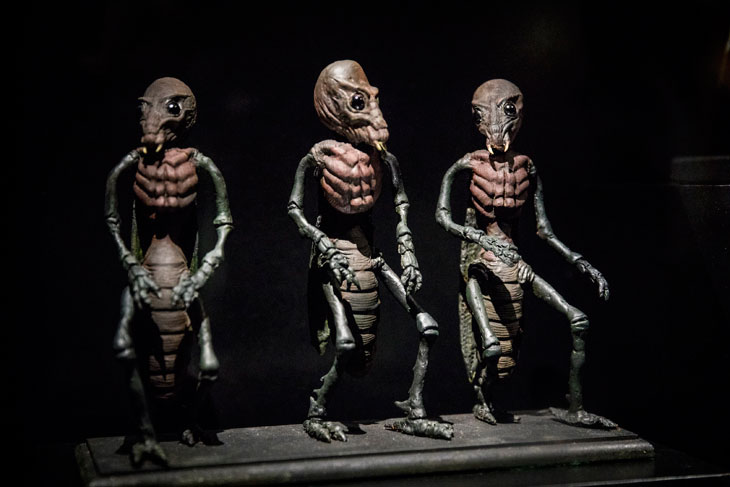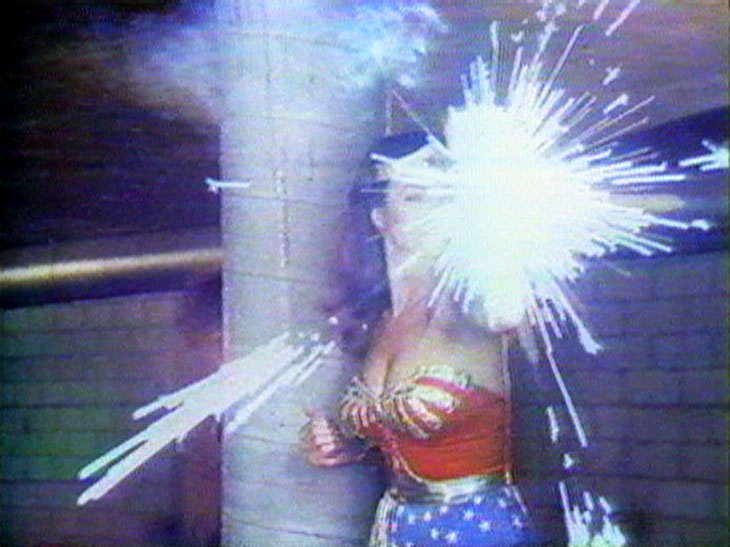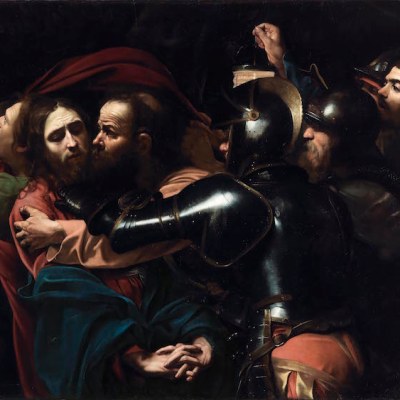Recently, the New Yorker ran a story about SciFutures, a network of science fiction writers who produce customised stories for companies. Executives then use these stories to help position their brand, anticipating future trends and technologies. Naturally, SciFutures creates stuff for the military. Their stories about ‘smart guns’ and ‘Fear Battalions’ have been discussed in workshops by senior NATO officials, who want to ensure they don’t keep fighting the last war so are using science-fiction to prepare for the next one.
Such real world application of science fiction concepts underpins some of the thinking behind ‘Into The Unknown’, the Barbican Centre’s excellent exhibition devoted to sci-fi that runs at The Curve exhibition space until 1 September. A few years ago, an exhibition at the British Library addressed the same topic but could not do it justice using books alone – it felt like walking around a huge reading list of books that you weren’t allowed to touch. The Barbican is able to cast the net far wider, taking in cinema props, literature, comics, magazines, advertising, video art, film clips, graphic art and audio in an almost overwhelming assault on eyes and ears.
Models, Ray Harryhausen Foundation at ‘Into the Unknown: A Journey through Science Fiction’ (installation view; 2017), at the Barbican Centre. Photo: Tristan Fewings/Getty Images

At the start, ‘Into The Unknown’ attempts to define science fiction. It’s about stories that are both speculative and rational – logic puzzles, essentially – but also ones that transmit a sense of wonder. And it’s that sense of wonder that the Barbican really goes for, drawing out numerous overlapping memories of favourite films, books and comics. Here are gorgeous models by Ray Harryhausen and H.R. Giger, Victorian advertisements depicting future cities, magic lantern slides of Jules Verne adventures, colourful 8mm film reel boxes for alien B-movies, Star Wars storyboards, Darth Vader’s helmet, location sketches from Dune, Dark City and District 9, props from A Scanner Darkly, Interstellar and EXistenZ, interactive reconstructions of scenes from The Martian, Mars Attacks trading cards, gorgeous pulp artworks, classic superhero comics, a piece of video art based on Lynda Carter’s Wonder Woman TV series, robots from Lost In Space, I, Robot and Buck Rogers, spacesuits, a recording of Orson Welles’ War Of The Worlds broadcast and a wonderful set of postcards from 1914 imagining Moscow in the 23rd century.
Technology/Transformation: Wonder Woman (video still; 1978–79), Dara Birnbaum. Courtesy of the artist and Electronic Arts Intermix

If all that seems a little breathless, it conveys something of the atmosphere the Barbican has created. This is an exhibition targeted at the senses more than the brain, more Star Wars than Stalker. The philosophical implications of the best science fiction are discussed in greater depth in the accompanying catalogue, but they are not ignored in the exhibition itself. Cases of books are used to introduce the exhibition’s different themes, allowing Orwell and Atwood to rub shoulders with Frank Herbert and Isaac Asimov, and emphasising that despite the prevalence of film props, this is at heart a literary genre. It’s writers that drive science fiction forward, coming up with the ideas and concepts that are then explored further in art, film and advertising.
‘Into the Unknown: A Journey through Science Fiction’ (installation view; 2017), at the Barbican Centre. Photo: Tristan Fewings/Getty Images

It’s also a genre that has an almost unique ability to fuse high and low notions of culture, and on this, the final exhibit is telling – six science fiction books annotated by Jorge Luis Borges, among them a collection of essays by J.G. Ballard, Ray Bradbury and John Wyndham titled Into The Unknown, from which the exhibition gets its name.
‘Into The Unknown’ is at the Barbican Centre, London, until 1 September 2017.



